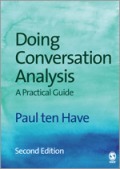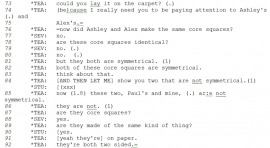Goal 5
knowledge of research and research methods for studying language teaching and learning.

Artifact 11 is from the final exam of APLNG 591: Second Language Acquisition (SLA). At the beginning of the exam, several mock-research proposals are offered showcasing knowledge of research methods. Part 2 of the exam showcases knowledge of research done on the zone of proximal distance versus i+1 and linguistic versus communicative competence. Finally, Part 3 of the exam includes various ways of analyzing data.
Of course we also learned about many research methods such as ethnography and qualitative versus quantitative research, and intensively studied various research done in the field of SLA in this class, but I feel that this exam highlights major skills and information I learned. Although I studied some of what I learned in this course during my BA degree at UNI, I still learned a lot of new information. Some information I had already learned was taught from a different perspective or in more detail, so I was able to expand the knowledge I already had in this field. SLA is a field in which one can always continue learning and expanding their knowledge!
Of course we also learned about many research methods such as ethnography and qualitative versus quantitative research, and intensively studied various research done in the field of SLA in this class, but I feel that this exam highlights major skills and information I learned. Although I studied some of what I learned in this course during my BA degree at UNI, I still learned a lot of new information. Some information I had already learned was taught from a different perspective or in more detail, so I was able to expand the knowledge I already had in this field. SLA is a field in which one can always continue learning and expanding their knowledge!
| artifact11.doc |

Artifact 12 is from APLNG 586: Analyzing Classroom Discourse. The research method we studied in this class was Conversation Analysis (CA). This is a collection of reading reflections I did throughout the semester, learning what CA is and how to do it.
I never thought I would learn a research method because I am very focused on teaching ESL rather than doing my own studies or research. When I began the course, I was worried that I would not understand anything, much less be able to complete the assignments. Honestly, I was very scared to learn CA! As it turned out, however, ten Have's book (pictured) was fairly easy to follow and I was able to receive any help I needed from my instructor and classmates. To my surprise, not only did I understand CA methodology, but I actually found it quite interesting! After learning the basics from ten Have, I was able to understand the journal articles we read and reflected on written in CA style. CA is not only interesting to read about, but also is definitely useful for teachers, especially regarding research in the area of classroom discourse. CA research in this field can provide teachers insight to the seemingly unimportant words they use (like "okay"); perhaps in the future, CA will be able to provide techniques or strategies for how teachers can effectively use these words to enhance their classrooms.
I never thought I would learn a research method because I am very focused on teaching ESL rather than doing my own studies or research. When I began the course, I was worried that I would not understand anything, much less be able to complete the assignments. Honestly, I was very scared to learn CA! As it turned out, however, ten Have's book (pictured) was fairly easy to follow and I was able to receive any help I needed from my instructor and classmates. To my surprise, not only did I understand CA methodology, but I actually found it quite interesting! After learning the basics from ten Have, I was able to understand the journal articles we read and reflected on written in CA style. CA is not only interesting to read about, but also is definitely useful for teachers, especially regarding research in the area of classroom discourse. CA research in this field can provide teachers insight to the seemingly unimportant words they use (like "okay"); perhaps in the future, CA will be able to provide techniques or strategies for how teachers can effectively use these words to enhance their classrooms.
| artifact12.docx |

Artifact 13 is from APLNG 586: Analyzing Classroom Discourse again. Not only did I learn about CA, the methodology and ideology behind it, but I also learned how to transcribe classroom dialogue using the CA method. This file includes some of the transcriptions I did in this class.
Although I enjoyed learning about CA, I dreaded transcribing, but, once I tried it, I learned that while, yes, can be tedious, it can also be very rewarding.
Although I enjoyed learning about CA, I dreaded transcribing, but, once I tried it, I learned that while, yes, can be tedious, it can also be very rewarding.
| artifact13.docx |

